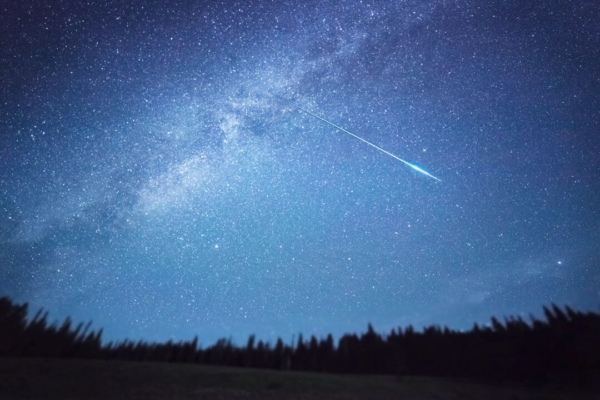A meteor shower will kick off the new year with a peak period. The Quadrantid meteor shower reaches its peak in early January every year, making it one of the best annual meteor showers.
However, NASA warns astronomy enthusiasts to stay alert because the Quadrantids meteor shower peak period only lasts for a few hours and is one of the fastest meteor showers in the night sky.
According to NASA, most meteor showers have peak periods that last for two days, increasing the chances of observation. But the peak period of the Quadrantids meteor shower is much shorter due to the fine particle stream of the shower, and Earth passes through the particle stream at a perpendicular angle. Under ideal conditions during the peak period, observers can see 60 to 200 Quadrantid meteors per hour.
Meteors are fragments left behind by shattered asteroids and comets, scattered along the orbits around the sun in the form of dust trails. Each year, Earth passes through these debris trails, with dust and rock fragments burning up and disintegrating in the Earth’s atmosphere, creating the colorful spectacle known as a meteor shower.
According to CNN, Bob Lunsford, a coordinator with the American Meteor Society, stated that the meteor shower is expected to peak between 10 a.m. and 1 p.m. Eastern Time on January 3. Alaska, Hawaii, and the Far East region of Asia will witness this bright meteor shower.
For the best viewing of the Quadrantids meteor shower in the Northern Hemisphere, particularly before dawn, viewers should find a location away from city lights or street lamps. It is recommended to bring a sleeping bag, blankets, or lawn chairs to combat the winter weather. Allow your eyes approximately 20 to 30 minutes to adjust to the darkness.
Lunsford mentioned to CNN that astronomy enthusiasts on the East Coast of North America may see up to 25 meteors streaking across the sky, while those on the West Coast could see twice that amount due to the later sunrise time. If the skies remain clear in western Alaska, observers of the meteor shower could see over 100 meteors per hour.
He added that the waxing crescent moon is only 11% full and will set before midnight, allowing for uninterrupted meteor shower viewing.
While the Quadrantids meteor shower may not have long-lasting meteoric activity, it can produce bright fireballs, creating a spectacular sight.
The Quadrantids meteor shower is usually not visible in the Southern Hemisphere.
Quadrans Muralis, Latin for the Quadrant, is an older constellation that is not part of modern constellations. Its position lies roughly between Bootes and Draco, with a declination of around 50N. Distinguishing meteors within the Quadrantid group is not difficult, as they often appear reddish in color.
NASA notes that the Quadrantids meteor shower is also known for its bright fireball meteors. Unlike most meteor showers that originate from comets, the Quadrantids meteor shower originates from the asteroid 2003 EH1. This asteroid takes 5.52 years to orbit the sun.
The radiant point of the meteor shower is located at the right angle between the Big Dipper and the bright star Arcturus. However, since meteors are visible in all parts of the sky, there is no need to only look in that direction.
Following the Quadrantids meteor shower, meteor shower activity will calm slightly, with the next meteor shower not expected until April. Here is a list of meteor showers expected in 2025 along with their peak dates, as compiled by CNN:
– Lyrids Meteor Shower: April 21st to 22nd
– Eta Aquariids Meteor Shower: May 3rd to 4th
– Delta Aquariids (Southern): July 29th to 30th
– Alpha Capricornids Meteor Shower: July 29th to 30th
– Perseids Meteor Shower: August 12th to 13th
– Draconids Meteor Shower: October 8th to 9th
– Orionids Meteor Shower: October 22nd to 23rd
– South Taurids Meteor Shower: November 3rd to 4th
– North Taurids Meteor Shower: November 8th to 9th
– Leonids Meteor Shower: November 16th to 17th
– Geminids Meteor Shower: December 12th to 13th
– Ursids Meteor Shower: December 21st to 22nd

